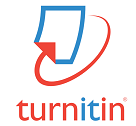Increasing The Students’ Learning Activity and The Students’ Derivation Words Mastery Using The Memory Strategies at Second Grade s in University of Bina Sarana Informatika
Abstract
Keywords
Full Text:
PDFReferences
Aini, A. Q., & Hanik, E. U. (2021). Sinergitas Antara Guru Dengan Orang Tua Melalui Pemanfaatan Teknologi Pembelajaran Daring Pada Kelas II MI NU Miftahut Tholibin Kudus Article Info. Jurnal Teknologi Pembelajaran (JTeP), 1(1), 1–7. https://journal.iaimnumetrolampung.ac.id/index.php/jtep
Astuti, W., & Kristin, F. (2017). Penerapan Model Pembelajaran Teams Games Tournament Untuk Meningkatkan Keaktifan dan Hasil Belajar IPA. Jurnal Ilmiah Sekolah Dasar, 1(3), 155. https://doi.org/10.23887/jisd.v1i3.10471
Effendi, M. (2016). Integrasi Pembelajaran Active Learning dan Internet-Based Learning dalam Meningkatkan Keaktifan dan Kreativitas Belajar. Nadwa: Jurnal Pendidikan Islam, 7(2), 283–309. https://doi.org/10.21580/nw.2013.7.2.563
Hadibarata, T., & Rubiyatno, R. (2019). Active learning strategies in environmental engineering course: A case study in curtin university Malaysia. Jurnal Pendidikan IPA Indonesia, 8(4), 456–463. https://doi.org/10.15294/jpii.v8i4.19169
Khalifasati, A., & Susanto, D. A. (2023). the Students’ Memory Language Learning Strategy in Mastering English Materials At Vocational School Level. PRIMER : Jurnal Ilmiah Multidisiplin, 1(4), 374–385. https://doi.org/10.55681/primer.v1i4.164
Kharisma, E. A. (2018). Problematika Guru dalam Pelaksanaan Pembelajaran Tematik Terpadu Tema Peristiwa Alam Kelas I di Sd Negeri Mojoluhur. UMSLibrary, i–106.
Moma, L. (2017). Pengembangan Kemampuan Berpikir Kreatif Dan Pemecahan Masalah Matematis Mahasiswa Melalui Metode Diskusi. Jurnal Cakrawala Pendidikan, 36(1), 130–139. https://doi.org/10.21831/cp.v36i1.10402
Nurdini, H., & Marlina, L. (2017). Journal of English Language Teaching VOCABULARY JOURNAL AS A LEARNING TOOL FOR STUDENTS IN LEARNING VOCABULARY THROUGH READING AT JUNIOR HIGH SCHOOL. Journal of English Language Teaching, 6(1), 272–285. http://ejournal.unp.ac.id/index.php/jelt
Oxford, R. L. (2003). Language Learning Styles and Strategies : an Overview. Learning, 1–25.
Raniah, A., Prantista, J. R., Alfiana, D. P., Aghisni, S. F., & Ahsani, E. L. F. (2021). Dampak Pandemi terhadap Pemanfaatan e-Learning pada Sekolah Dasar di Den Haag. Islamic Review: Jurnal Riset Dan Kajian Keislaman, 10(1), 111–124. https://doi.org/10.35878/islamicreview.v10i1.251
Sari, N., & Fakhru Ahsani, E. L. (2021). Pelaksanaan Evaluasi Pembelajaran Berbasis Google Form Selama Masa Pandemi pada Peserta Didik SD/MI. Terampil: Jurnal Pendidikan Dan Pembelajaran Dasar, 7(2), 107–118. https://doi.org/10.24042/terampil.v7i2.6567
Setyani, S., Zuliyana, F., Rofitrasari, R., Amelia, N., & Ahsani, E. L. F. (2021). Analisis Sistem Pendidikan Di Sekolah Indonesia Kuala Lumpur (SIKL) : Perspektif Guru. Jurnal PGSD: Jurnal Ilmiah Pendidikan Guru Sekolah Dasar, 14(1), 70–79. https://doi.org/10.33369/pgsd.14.1.70-79
Teh Chee Ghee, F. A. G. (2015). Memory Strategies Used By Teachers. Journal of Geotechnical and Geoenvironmental Engineering ASCE, 120(11), 259.
Wijaya, C. S. (2013). P ENELITIAN TINDAK AN K ELAS Melejitkan Kemampuan Penelitian Untuk Meningkatkan Kualitas Pembelajaran Guru (M. P. H. Rusydi Ananda (ed.)). citapustaka MEDIA PERINTIS.
Woolfolk, A. E. (2013). Educational Psychology (12th ed). Boston: Pearson.
DOI: https://doi.org/10.26877/mpp.v18i1.19407
Refbacks
- There are currently no refbacks.

This work is licensed under a Creative Commons Attribution-ShareAlike 4.0 International License.
Jurnal Media Penelitian Pendidikan telah terindeks pada:
Media Penelitian Pendidikan : Jurnal Penelitian dalam Bidang Pendidikan dan Pengajaran by LPPM Universitas PGRI Semarang is licensed under a Creative Commons Attribution-ShareAlike 4.0 International License.Based on a work at http://journal.upgris.ac.id/index.php/mediapenelitianpendidikan.






















